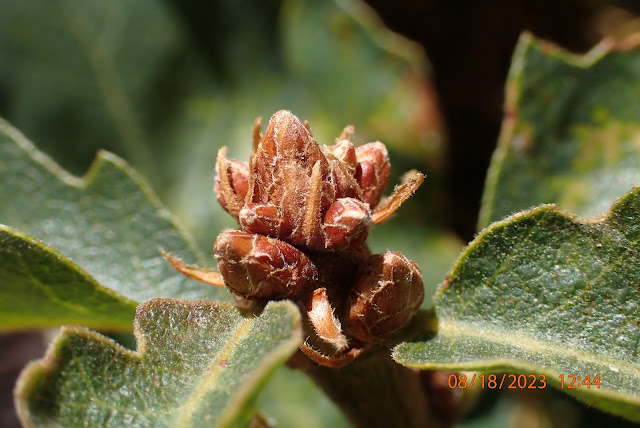Today I've almost finished with my classes to become a naturalist at the Fairfield Osborn Preserve, which is part of Sonoma State University's Center for Environmental Inquiry. Since I couldn't go on the hike because of the condition of my ankle right now, I stayed around the Education and Research Center, took some photos, and read up on some of the fauna of the preserve, most notably the Black Oak.
 |
| Looking over the stone fence at the Education and Resource Center. |
This was my second trip up to the preserve for that Naturalist Education Series, and I am thrilled to be a part of it!
After next Sunday's class, I'll officially be a naturalist, and will be working with other naturalists on leading school groups experiencing the preserve and just how amazing nature is.
Here are a few photos I snapped today, since I had the opportunity to play with both cameras for distance and very close photography:
1: you can almost always find a fence lizard, even though some of them like to stay more hidden. It was warm today, so several could be found basking on rocks around the preserve.
Today I've experienced a sense of wonder. I've also gone down an academic rabbit hole reading research on Black Oak, the changes in the oak's growth and propagation due to various factors, including Sudden Oak Death, overtopping by Douglas Firs, drought, and the suppression of the natural fire cycle here in CA, as well as the changes in land management and the human caused larger (hotter) fires.
Land management has been an emerging interest of mine, and I realized today it goes back a ways to the replanting of the cottonwoods along the bosque in New Mexico. We often talk about "restoring" the landscape when talking about removing invasives or planting new trees. In most cases, we're talking about attempting to reverse damage done by human policies. The problem comes in because we are using human policies to correct previous human policies, and human interpretation of what it might have been if humans hadn't interfered.
Sometimes we have then to interfere with something else... I'm thinking about cottonwoods again, and planting them, and pretty quickly we started seeing changes in the habitat. One change we had in very short order was the return of beaver to the area, which involved people going out and tearing out beaver dams and homes and eventually relocating beavers, because they were taking down the new trees.
Messing with what Mother Nature is doing always feels a bit like a Jenga game to me.












Comments
Post a Comment